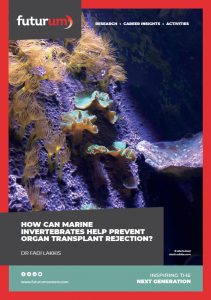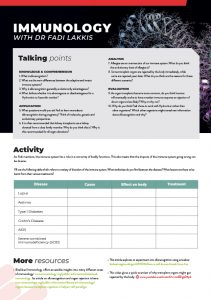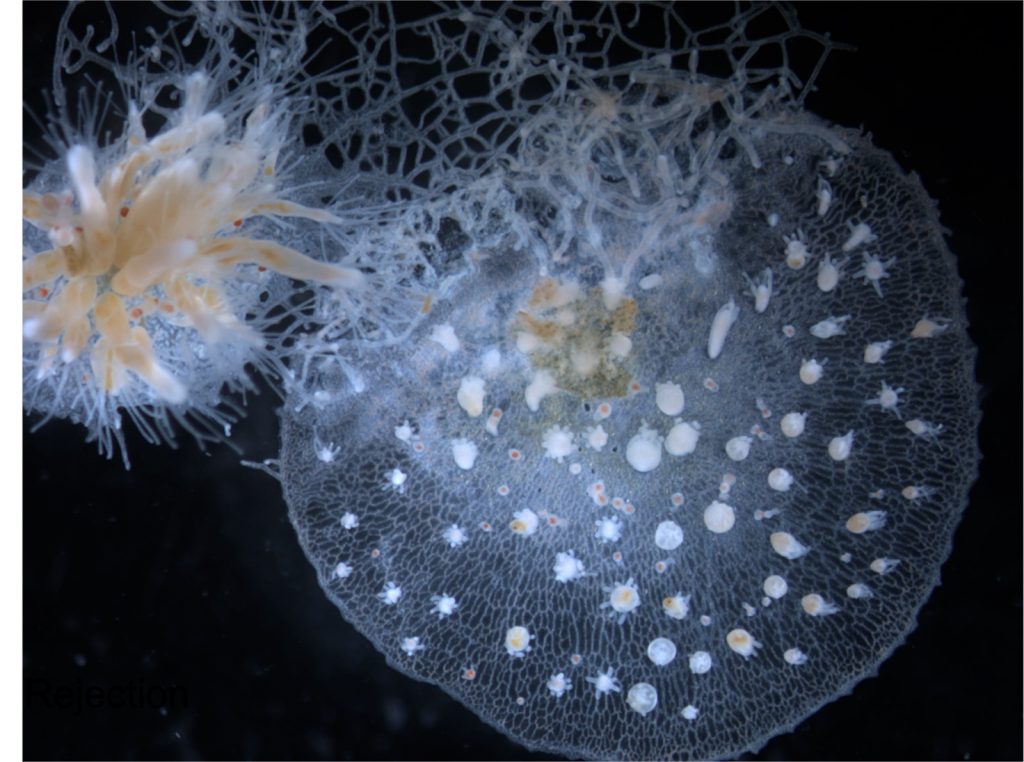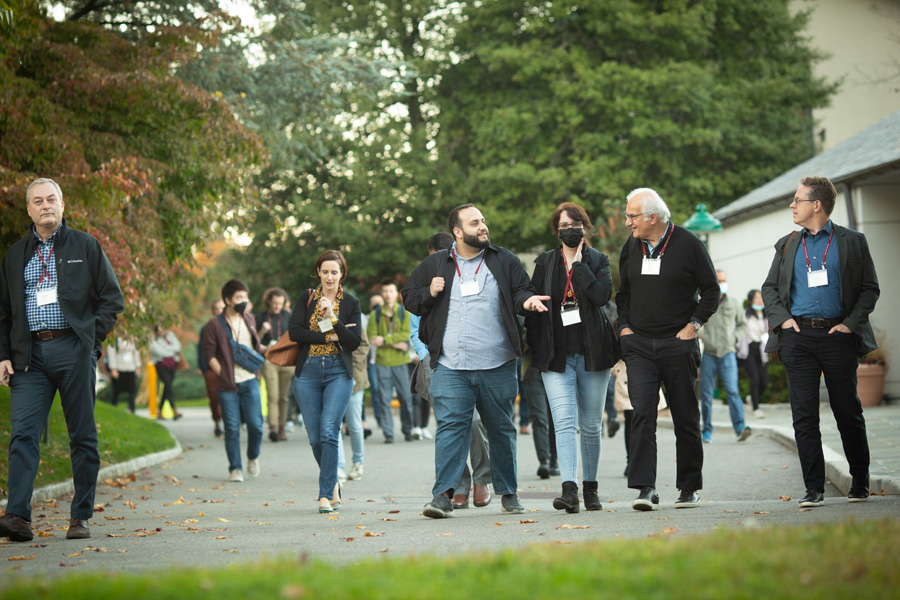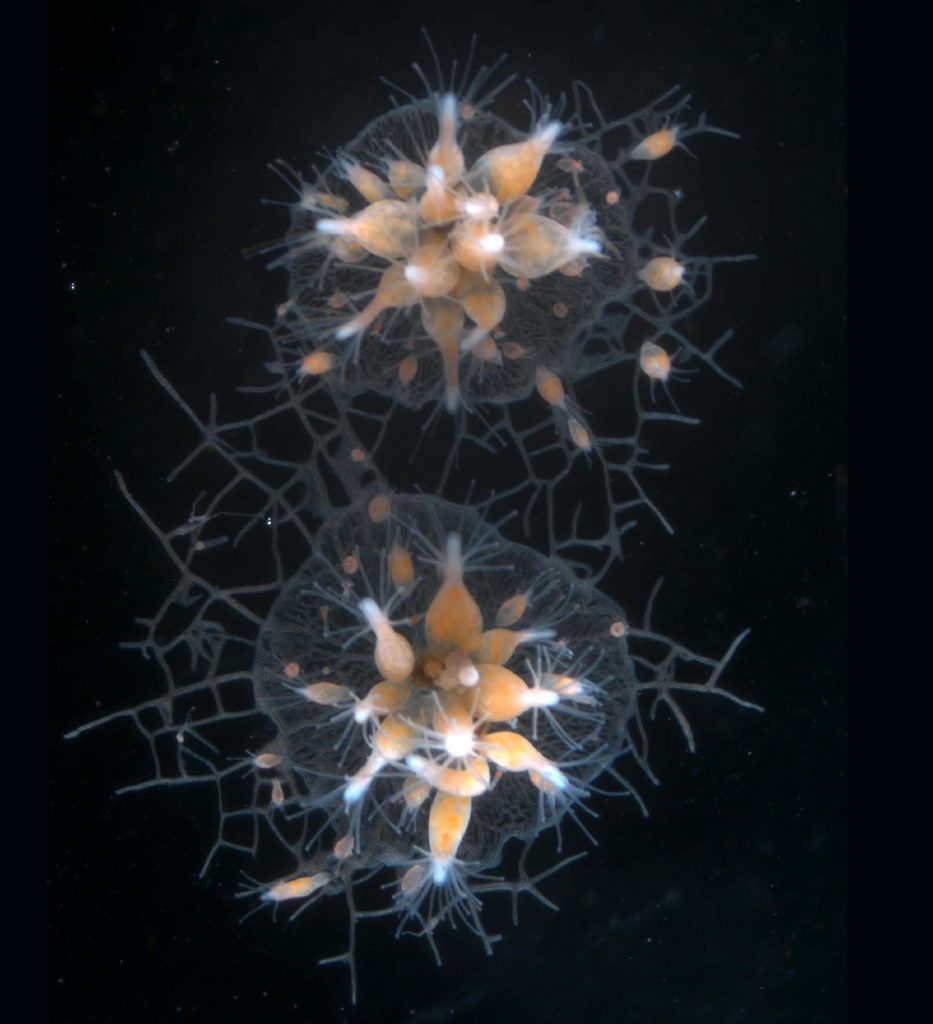How can marine invertebrates help prevent organ transplant rejection?
A major challenge surrounding organ transplants is the body’s recognition of the new organ as ‘other’, which often leads to a dramatic immune response and rejection of the organ. To address this issue, Dr Fadi Lakkis of the University of Pittsburgh in the US is examining the mechanisms behind this response, using some interesting little invertebrates with their own unique traits to test his theories.
TALK LIKE AN IMMUNOLOGIST
Adaptive immune system — the part of the immune system that recognises and attacks specific pathogens
Allorecognition — the ability of an organism to distinguish its own tissues from those of other organisms
Cnidarian — a wide-ranging group of aquatic invertebrates
Innate immune system — the part of the immune system that involves non-specific responses to foreign objects
Invertebrate — any animal lacking a backbone, comprising 95% of all animal species
When we think of incredible medical achievements that have the potential to make a significant impact on an individual’s quality of life, organ transplants are surely near the top of the list. From a person deciding to donate their organs, to a bereaved family making the decision to donate a loved one’s organs, transplants represent scientific endeavour and human altruism working in beautiful unison. However, as you would expect of such an incredible medical intervention, the mechanisms behind organ transplants are complex and still pose many unanswered questions.
“The science of organ transplantation is, in many ways, a great success story,” says Dr Fadi Lakkis. “However, while patients might do well in the short term, often the body rejects the organ some years later.” This is a serious issue, especially for young patients, since it creates a critical need to find replacement organs which are usually in short supply. Understanding why these organs are rejected is essential to preventing this need and, ultimately, to saving lives. Dr Fadi Lakkis is a Distinguished Professor of Surgery at the University of Pittsburgh and specialises in researching why and how transplanted organs are rejected.
In almost all cases, the body’s ability to reject foreign material is an extremely useful trait that helps protect us from injury and infection. The human immune system has evolved over millions of years to become extremely good at identifying and addressing anything in the body that should not be there. This is called immune recognition – the distinction between self and non-self. This applies to anything foreign, including material from other members of your species, such as organ transplants, – in which case, it is known as allorecognition.
The hidden immune system
The science behind allorecognition is far from fully understood and involves a ‘secret’ branch of the immune system. “An immune system can be divided into two parts,” says Fadi. “People are most familiar with the adaptive immune system, made of T cells and B cells which produce antibodies and attack specific pathogens. The other part, the innate immune system, is a bit more hidden.”
The innate immune system is more primitive and much more ancient than our adaptive immune system but is also more generalised. “The white blood cells in the innate immune system tend to respond to anything foreign by causing inflammation,” says Fadi. “It is this system that triggers organ rejection.” But an important question remains – what exactly are these cells sensing that leads to this rejection? If we can understand what they sense, then we might be able to find clever ways of stopping them sensing this for transplanted organs.
Lessons from an unlikely source
Allorecognition is found across nature. A tenet of evolution is the preservation and inheritance of genetic material, so rejecting anything that could endanger this genetic material is generally sensible. However, there are cases where this does not fully apply, which present an opportunity to understand the genetics behind allorecognition itself.
Cnidarians are a unique group of marine animals that branched off from our own evolutionary tree about 600 million years ago, before the evolution of backbones or central nervous systems. The group includes animals such as jellyfish, sea anemones, corals and a less known genus called Hydractinia, which are the stars of Fadi’s research.
“In the wild, Hydractinia live in shallow waters, in crowded environments where ‘real estate’ is in high demand,” says Fadi. “Hydractinia don’t move from place to place but fix to a surface and produce more cells to grow outwards and, ultimately, produce offspring.” Inspired by the work of two evolutionary biologists, Leo Buss and Matt Nicotra, Fadi became interested in what happens when two of these animals grow until they are touching one another. The sense of ‘self’ is more vague in these animals as they have the ability to fuse and swap stem cells, so can find themselves harbouring another organism’s genetic material. “The only way for these organisms to protect their space is by rejecting others, via their version of the innate immune system,” says Fadi. “However, they can also ‘join forces’, fusing and sharing stem cells, so we were interested in how they decide whether to reject or accept.”
Reference
https://doi.org/10.33424/FUTURUM348
The answer lay in how closely related the two animals were – in other words, how much of their genetic material they shared. Fusing can bring advantages, as bigger animals can produce more offspring and produce them sooner. However, it can also be dangerous, as the stem cells of either animal may overwhelm the other and stop their genes being passed on.
“Nature found a compromise,” says Fadi. “The animal senses how closely related the other organism is, and if they’re closely related, they are happy to fuse.” This fusing is worth the genetic risk because, even if the animal becomes overwhelmed, most of its genes will still be passed on when the other animal produces offspring. “However, if they are not closely related, they will reject the other organism,” says Fadi. “It is both protecting its territory and protecting its genes.”
Relevance to humans
Fadi and his colleague Matt Nicotra grew Hydractinia on glass slides in the lab, noting which combinations chose to fuse or reject and their relatedness. Then, Matt investigated the genetics of the animals to see what controlled this decision. Matt identified a whole family of genes responsible for recognition of self or non-self. “Hydractinia are far removed from us, so their genes don’t bear much relation to ours,” says Fadi. “However, the downstream mechanisms – the way the molecules produced by the genes function – may be similar.” This forms a future area of research: studying the molecules produced when these genes are expressed, how they recognise self or non-self, and how they communicate this recognition to the cell.
On to humans, Fadi explains that pregnancy presents a unique example of when the boundaries between self and non-self become blurred, and what this means for allorecognition. Even though a foetus shares half its genes with its mother, the mother and child are still genetically different, yet are inextricably linked via the placenta and umbilical cord. “There is a conflict between two genetic materials,” says Fadi. “We think that allorecognition plays a role in stopping the foetus’s genetic material ‘invading’ the mother. At the same time, the foetus ‘tricks’ the mother’s immune system, to some degree, to stop it attacking the foetus itself.” Understanding what these tricks are could lend insight into how we could ‘trick’ patients’ bodies into accepting donated organs.
With a growing understanding of the innate immune system, the next step is to study how it works in animals more like us. “Mice are mammals like us humans,” says Fadi. “In mice, we found the cells of the innate immune system have receptors that recognise transplanted tissue as non-self.” These findings have caused a lot of excitement and stimulated new research. “We’re now trying to see if we can use antibodies to block these receptors, which could make transplant organs better accepted,” says Fadi.
 Dr Fadi Lakkis
Dr Fadi Lakkis
Biomedical Science Tower, University of Pittsburgh, USA
Field of research: Immunology
Research project: Studying marine invertebrates and mammals to learn about the genetic and molecular mechanisms behind allorecognition
Funder: US National Institutes of Health (NIH)
ABOUT IMMUNOLOGY
Immunology involves the study of the body’s immune system. It is a very important branch of medicine and biology, given how essential the immune system is to how we respond to disease and the serious consequences if the immune system goes wrong. Dr Fadi Lakkis explains more about his field.
“Immunology touches almost all aspects of human life. As well as my own specialism of organ transplantation, it is also important to understand infectious disease and cancers, and develop vaccines and treatments. For instance, we’re finding ways to prompt the immune system to reject tumours.
“Immunology helps us understand autoimmune diseases, where the body rejects its own tissues. This includes lupus and rheumatoid arthritis. We’re also finding more and more links between the immune system and neurodegenerative diseases such as Alzheimer’s and the possibility that it is a malfunction of the innate immune system that leads to the death of brain cells.
“The beauty of immunology is that it doesn’t involve just a single tool. It involves learning a whole set of tools and is now being further enriched by the rise of new fields such as computational immunogenomics. A lot of our lab work these days involves analysis of very large sets of genes or seeing which genes are being transcribed. This is a lot more efficient than experiments on individual cells.
“Understanding computer science and mathematics is becoming increasingly important to immunology. When you have gigantic datasets, you have to know what to do with them. Processing and visualising them accurately and effectively is essential and requires a knowledge of programming and statistics.”
Pathway from school to immunology
• Fadi says studying biology at school and post-16 is essential. He also highlights the growing importance of computer science within his field. Other subjects such as mathematics and chemistry can also be useful.
• At university, specific degrees in immunology are available at a number of institutions. Other degrees that can lead to a career in immunology include medicine, biology, molecular biology and genetics.
Explore careers in immunology
• The Society for Science runs a wealth of impactful science competitions and outreach programmes for high school students.
• The University of Pittsburgh, where Fadi works, holds a number of summer camps and other research opportunities for high school students.
• The American Association of Immunologists has a summer research programme for high school teachers that promotes excellence in science education.
• Careers in immunology can involve work in the lab, with patients or both. Immunology jobs can be well-paid – according to CareerExplorer, the average salary for an immunologist in the US is around $200,000.
Meet Fadi
“I remember being inspired by books, such as the Children’s Encyclopaedia Britannica, and educational magazines I borrowed from my brother. I like physical books – a solid object that doesn’t involve other distractions, like online sources do. Teachers were my other main inspiration. All it takes is one teacher who gives you support or positive feedback to get you hooked.
“Many scientists forget that when we have a hypothesis, our experiments should try and refute it, rather than prove it. For me, the best eureka moments are when you discover that your hypothesis is wrong! That leads you to a more truthful path.
“I’ve been fortunate to have two very different mentors. One had a very rigorous approach, which helped me learn discipline in my work. The other was very hands-off, which allowed me to make my own mistakes and be creative.
“I’m an immigrant. As an immigrant, you have to prove yourself repeatedly before you can meet your goals. This can be frustrating, but the way to overcome it is to be optimistic and not resent the situation. It’s an increasingly common experience; here in the US, a large proportion of people working in science are immigrants. Fortunately, our merit-based system means that even with initial disadvantages, it’s possible to gain the recognition you deserve.
“I’m most proud of the young people who I’ve helped train. Many have gone on to have their own research labs and do very well. More specifically, I’m proud of my work into understanding the innate immune system and the big advances we’ve uncovered. I’m proud to have worked on this fundamental question and progressed our collective understanding, even if just by a few inches.”
Fadi’s top tip
Find your own projects, such as participating in science fairs. As well as building your own scientific knowledge, this will provide experience of hands-on science and develop your ability to communicate and present your findings effectively.
Do you have a question for Fadi?
Write it in the comments box below and Fadi will get back to you. (Remember, researchers are very busy people, so you may have to wait a few days.)

